Here is my query:
SELECT TOP (100) PERCENT
dbo.PMAPS.PMAP_Employee_NED_ID,
dbo.Employees.First_Name,
dbo.Employees.Last_Name,
dbo.Employees.DeptID,
dbo.Employees.Barg_Unit,
dbo.Employees.Pay_Plan,
dbo.Employees.Grade, dbo.Employees.Last_Name + ', ' + dbo.Employees.First_Name AS Full_Name,
dbo.FDA_Centers.Center_Acronym,
MAX(dbo.PMAPS.PMAP_Establishment_Rating_Official_Signed) AS PMAP_Establishment_Rating_Official_Signed,
dbo.PMAPS.PMAP_MidYear_Rating_Official_Signed,
dbo.Employees.center_ID,
dbo.Employees.office_id,
dbo.PMAPS.PMAP_MidYear_Estimated_completion_Date,
dbo.PMAPS.PMAP_MidYear_Estimated_completion_Reason,
dbo.PMAPS.PMAP_Below_Level_Three,
dbo.PMAPS.PMAP_Contact_LER
FROM dbo.PMAPS
INNER JOIN dbo.Employees ON dbo.PMAPS.PMAP_Employee_NED_ID = dbo.Employees.CapHR_ID
INNER JOIN dbo.FDA_Centers ON dbo.Employees.center_ID = dbo.FDA_Centers.Center_ID
GROUP BY dbo.PMAPS.PMAP_Employee_NED_ID,
dbo.PMAPS.PMAP_Year
dbo.PMAPS.PMAP_IsActive
dbo.PMAPS.PMAP_MidYear_Estimated_completion_Date
dbo.PMAPS.PMAP_Below_Level_Three
dbo.Employees.center_ID
dbo.Employees.isCommissionedCorps
dbo.Employees.isExecutive
dbo.Employees.Pay_Plan
dbo.PMAPS.PMAP_Establishment_Rating_Official_Signed
dbo.FDA_Centers.Center_Acronym
dbo.Employees.First_Name
dbo.Employees.Last_Name
dbo.Employees.DeptID
dbo.Employees.Barg_Unit
dbo.Employees.Pay_Plan
dbo.Employees.Grade
dbo.Employees.center_ID
dbo.Employees.office_id
dbo.PMAPS.PMAP_MidYear_Rating_Official_Signed
dbo.PMAPS.PMAP_MidYear_Estimated_completion_Reason
dbo.PMAPS.PMAP_Contact_LER
HAVING (dbo.PMAPS.PMAP_IsActive = 1)
AND (dbo.Employees.isCommissionedCorps = 0)
AND (dbo.Employees.isExecutive = 0)
AND (NOT (dbo.Employees.Pay_Plan LIKE 'E%')
AND NOT (dbo.Employees.Pay_Plan LIKE 'Z%')
AND NOT (dbo.Employees.Pay_Plan LIKE 'S%')
OR dbo.Employees.Pay_Plan IS NULL)
AND (dbo.PMAPS.PMAP_MidYear_Estimated_completion_Date IS NULL)
AND (dbo.PMAPS.PMAP_Establishment_Rating_Official_Signed IS NOT NULL)
AND (dbo.Employees.center_ID = 14)
AND (dbo.PMAPS.PMAP_Year = 2020)
AND (dbo.PMAPS.PMAP_MidYear_Rating_Official_Signed IS NULL)
ORDER BY dbo.PMAPS.PMAP_Employee_NED_ID;
Results:
Then data rows that are highlighted are the rows I need to display. I've tried MAX() (In query above), Distinct and nothing seems to work. Please advise. Thanks in advance.
